Home > The Experience > Shore Tours and Attractions
Shore Tours and Attractions
Beyond the breathtaking scenery, there are numerous historic attractions and opportunities to experience the rich culture of life on the river. All of our cruise itineraries feature daily highlights and guided shore tours, and we are happy to provide these experiences for our passengers as part of your all-inclusive cruise fare.
1000 Islands
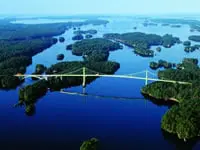
This cruise will take you to witness the island paradise and natural and man-made charm of the archipelago. The intimate size of the Canadian Empress allows her to get up-close and present you with an unprecedented look of this region. Nature lovers will be in a land of awe, sighting wild life along the shores from island to island.
1000 Islands Boat Museum
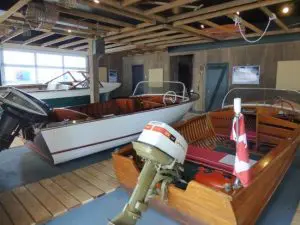
The 1000 Islands Boat Museum is a hands-on Museum where history becomes something that can be touched, built, and experienced. The Museum includes a Boatbuilding Shop, an Activity Center, and Exhibit Galleries. The main buildings house operations and programs, while the Museum’s collection of antique boats are showcased on the docks as live exhibits. The vision of the museum is to bring the heritage of the St. Lawrence River, the 1000 Islands, and the magical spirit of the region to life.
1000 Islands Heritage Museum
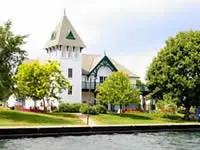
On Gananoque’s waterfront there’s a grand Victorian building designed in the tradition of the late 19th century two storey “grand cottage” with its expansive verandahs and a “widow’s walk” lookout tower. It’s the Arthur Child Heritage Museum of the Thousand Islands, constructed on the site of the original main station for the Thousand Islands Railway. This museum is dedicated to interpreting the history, geology, ecology, and culture of the 1000 Islands region.
Aquatarium
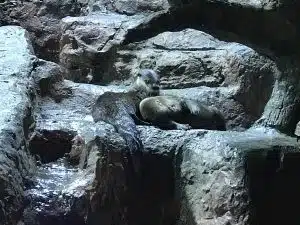
The Aquatarium is a non-profit interactive science and education museum located in Brockville, Ontario. The facility focuses on the history and ecology of the 1000 Islands region of the St. Lawrence River. Guests may participate in hands-on interactive exhibits, as well as seeing many species of fish and animals, such as otters, native to the St. Lawrence River.
Related Cruises
Boréalis Museum of Trois Rivieres
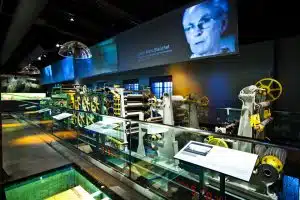
Boréalis is a museum dedicated to interpreting the rich industrial history of Trois Rivieres. Museum tours will focus on different themes, such as the forest, log driving, lumberjacks, and the life of workers throughout the history of the region. In this now-converted industrial site, you’ll have the chance to walk through a unique underground reservoir, make your own paper, and put your five senses to the test. Take advantage of your visit to admire the wonderful view of the St. Lawrence River and learn about the great adventure of paper!
Related Cruises
Canadian Connection Cruise WestBrockville Museum
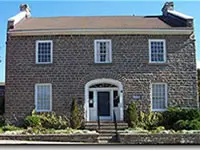
The Brockville Museum is home to exhibits and displays on Brockville’s industrial and cultural past, including its history as a centre of wealth and industry on the St. Lawrence River. The building itself is a historical landmark, first deeded to Daniel Jones in 1790, one of the area’s early settlers. In 1976 the City of Brockville, with assistance from the Brockville and District Historical Society, purchased the house and its surrounding property.
In 1981, the museum doors were first opened to the public and the museum has expanded its programs and exhibits since that time. In the early 1990s, the Museum expanded into a new addition which included a Carriage Hall, a classroom, costume room and an upper gallery which houses the archives, theatre and more exhibits.
Related Cruises
Brockville Railway Tunnel
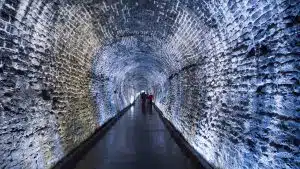
Brockville is one of Canada’s oldest municipalities and one of its oldest railway centres. The Grand Trunk Railway connected Brockville and Montreal in 1855. Canada’s First Railway Tunnel, part of the Brockville and Ottawa Railway, was built here between 1854 and 1860.
This historic Tunnel was completed 21 years before construction of the Canadian Pacific Railway even began and predates all of the rail tunnels in the Western Rockies. Controversial for its time, our Tunnel was a major feat of engineering and it remains a remarkable example of Canada’s pre-Confederation industrial heritage.
Related Cruises
Celebration of Spring CruiseHarvest and Colour Cruise
Canadian Aviation and Space Museum

Located on a former military air base, the Canadian Aviation and Space Museum focuses on aviation in Canada from its beginnings in 1909 to today. Your journey through Canada’s aviation and space history will traverse the early days of flight to the future of space exploration.
The most extensive aviation collection in Canada, it is also considered one of the finest aviation museums in the world. The collection itself consists of more than 130 aircraft and artifacts from both civil and military service. Among the museum’s highlights are the largest surviving pieces of the famous Avro Arrow, and the original Canadarm used on the Endeavour space shuttle.
Related Cruises
Carillon Lock

The lock at the Carillon Lock and Power Station is an impressive piece of engineering. Built between 1959 and 1964 this complex lock is a power station, powerhouse-dam and navigation lock in one. The lock alone is 188 feet long and 45 feet wide. It has a normal draught of nine feet. Downstream, on the Montreal side, the chamber of the lock is closed by a massive drop-gate, which is 67 feet high and 45 feet wide. It weighs more than 182 tons. Upstream, towards Montebello, the chamber is closed by a gate with two leaves. Each gate is 28 feet wide and 19 feet high. The average flow rate at Carillon is 2,000 cubic metres of water per second. To put that in perspective, if the river was carrying gasoline rather than water it could fill 40,000 automobiles per second! Think about that the next time you pull in
Related Cruises
Doran Bay Model Ship Museum
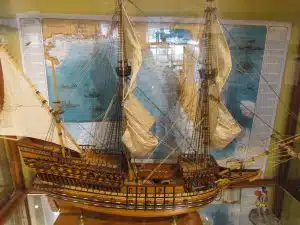
Fort Wellington
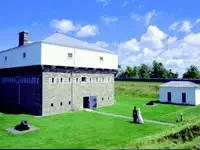
The first Fort Wellington was built during the war of 1812 high above the St. Lawrence River at Prescott. The second Fort Wellington, still standing today, was built as a result of the Upper Canada Rebellion of 1837-38. Although not very large, Fort Wellington is an excellent example of the French style of military engineering which became popular in the 18th century. At that time, fortifications of stone were no longer able to withstand the heavy artillery which armies were carrying, so military engineers substituted earth ones which could easily absorb the impact of cannonballs. These fortifications were easy to build and to maintain, as the ramparts were formed from the earth removed in the exaction of the ditch. Today, Fort Wellington is a national historic site, and is now administered by Parks Canada.
Fulford Place Mansion
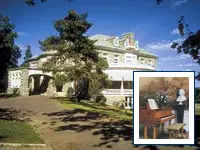
Home to Senator George T. Fulford and family between 1900 and 1987. Through the successful marketing of “Pink Pills for Pale People”, Fulford was able to purchase 14 acres of waterfront property in Brockville, Ontario and commissioned American Architect Albert Fuller to design a home capable of reflecting his success. The Fulford family donated the Mansion and its opulent decor to The Ontario Heritage Foundation in 1991. Contained within this 35 room Mansion is a diverse and elegant collection of original furnishings. Take a step back into a more spacious and gracious setting and enjoy some of the refinements that some of our most distinguished dignitaries once enjoyed.
Fur Trade Museum
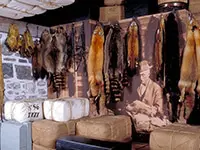
Located to the west of the Island of Montréal, the Fur Trade Museum at Lachine is a testimony to the culmination of the fur industry in the Montréal region in the 18th and early 19th centuries. The museum building, an old stone warehouse, dates from 1803. Alexander Gordon, ex-clerk and stockholder of the North West Company had it built to store trading goods and furs. In 1833, the warehouse became the property of the Hudson’s Bay Company. Today, this unique warehouse houses an exhibition that enables visitors to relive the Montréal fur epic.
Montreal Sightseeing

A complete City tour, taking in many points of interest, including Notre Dame Basilica, a masterpiece of Gothic Revival architecture. St. Joseph’s Oratory, atop of Mount-Royal, it is one of the world’s most visited shrines. Old Montreal, located between the River and downtown, this historical part of the City and its Old Port will put you into close contact with the past life of a major metropolis in North America. You will also see, The French Quarter, McGill University and we will stop for a photo opportunity from a scenic lookout on top of Mt. Royal offering a striking view of the downtown area and the St. Lawrence River.
Montreal's Space For Life

Through its communication, conservation, research and education activities, Montréal Space for Life guides human beings towards a fuller experience of nature. This mission is carried out for the more than 2 million people who visit the museums it groups together: The Biodome, Botanical Garden, Planetarium, and Insectarium. Our shore tours will focus on the newly renovated Biodome and the Botanical Garden, depending on seasonal tour availability.
Moses-Saunders Power Dam

The Moses-Saunders Power Dam, short for Robert Moses-Robert H. Saunders Power Dam, is a dam on the Saint Lawrence River straddling the border between the United States and Canada. It is located in between Massena in New York and Cornwall in Ontario.
The dam supplies water to two adjacent power stations. Constructed between 1954 and 1958, the dam created Lake St. Lawrence and is part of a larger project called the St. Lawrence Seaway. Aside from providing significant amounts of renewable power, the dam regulates the St. Lawrence River and affords passage for the navigation of large vessels.
Notre Dame du Cap Shrine

Our Lady of the Cape Shrine is Canada’s National Shrine to Our Blessed Mother. It is located at Trois-Rivières, in the district of Cap-de- la-Madeleine, half-way between Montreal and Quebec City. The very first church of Cap-de- la-Madeleine was a small wooden structure built in 1659. The second church, presently called the Old Shrine, and made with fieldstones, is still the oldest church in Canada in which Mass is celebrated daily. The Basilica of Notre-Dame-du-Cap is Canada’s national shrine to the Blessed Virgin Mary, and one of five national shrines in Canada. Each year, the site is visited by thousands of Catholic pilgrims.
Related Cruises
Omega Park

Nature is an infinite source of inspiration. A visit to Omega Park encourages the observation of earth and nature and all its wonders. In the comfort and safety of a utility bus, you will explore 10 kilometers of the beautiful, natural landscape of a Laurentian forest coming face-to-face with many species of Canada’s wild animals including wolfe, bear, moose, elk and buffalo to name a few.
Related Cruises
SDG Jail

Constructed in 1833, the Historic SDG Jail in Cornwall, Ontario holds plenty of local history. It was the site of many escapes, it served as an asylum, as a house of refuge and also was home to a notable courthouse. Today, the Jail offers guided tours, where you will be accompanied by a knowledgeable tour guide. During the course of the tour you will visit the original courthouse, every cell block, the surveillance room, the exercise yard, the gallows and much more.
Related Cruises
Seaway Locks
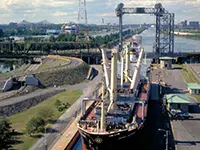
All locks on the Seaway are similar in size. In width they are 80 feet; the depth over the sill is 30 feet; and the length – that is breast gate to fender – is 766 feet. Ships can be raised or lowered from 45 feet to 49 feet depending on the season of the year.
The Iroquois lock is different than the other locks on the Seaway in that water is admitted by partially opening the upper or lower lock face. The other six locks are filled and emptied through sluices at the bottom of the lock.
Upper Canada Village
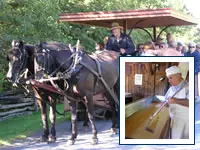
Upper Canada Village is a living museum community that recreates the life, work, and development of the early settlements along the upper St. Lawrence River valley. It is representative of rural eastern and Upper Canada from 1784 to 1867 when agriculture was fundamental to the province’s existence. Small emerging villages and towns were largely service and market centers for an agricultural economy. There was little division between urban and rural life. Even in towns many families kept a cow, raised fowl and grew a garden. It was this type of society that Upper Canada represents.
When you enter into the village you step back into the past; you’ll be in a community that might have existed 150 years ago. There’s the 1840 woolen mill powered by a spinning water turbine. That machinery turns faithfully and you can see wool become blankets. Horses, shod in the blacksmith’s shop, power wagons and carts used in the village. To tantalize you further the heady smell of freshly baked bread will lure you to the bakery. The skilled craftsmen and women who work in this village will tell you about their work. They, and the guides in every building, can help bring nineteenth century life into focus. All of the structures and their contents have been restored with painstaking accuracy. It’s a fascinating and comprehensive account of the past.